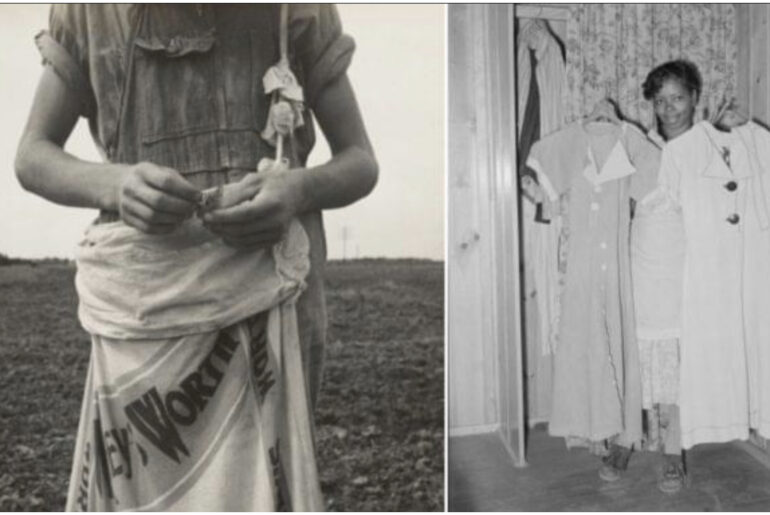Many of us grew up with our mothers and female relatives making our clothes. For some it was just costumes at Halloween or for school plays.
But, for others some years a majority of our clothing was homemade. When women worked inside the home their time was being used just about every minute of every day. Mending and caring for clothing, as well as making it from scratch, were no small part of a woman’s work load each week.
During the Great Depression colorful feedsack dresses became popular. Farmer’s wives would pick out the feedsacks with the most desirable prints and urge her husband to buy only the patterns she approved of. But, how did this tradition get started?
According to The Appalachian Storyteller on YouTube, the concept of using feedsacks for clothing and household goods may have been popular in the 1930s, but it didn’t start there.
Long before companies distributed dry goods like animal feed, flour, beans, coffee, and sugar in sacks they used barrels. These wood and metal barrels added a lot of weight to train, boat, and buggy shipments and were prone to rusting and leaking.
After the cotton gin was invented (and then later the sewing machine) fabric became a much cheaper commodity and putting these products in fabric sacks was a more affordable way to transport them.
Some products came in tighter weave sacks, usually with a round logo printed on the front, a remnant of the time when the company name had to fit on a circular barrel top.
But, a fair number of these sacks were so-called gunny sacks, made from coarsely-woven or unfinished fabric such a tow, a type of minimally processed flax fiber. Impoverished families re-used the sacks of all types for various purposes around the farm, including for bags, curtains, and even clothing.
Only the poorest people used the rough fabric of gunny sacks for clothing though. Across Europe v ictims of b ombing and shortages following World War I were sent American aid through the Red Cross, including feedsacks which were promptly made into clothing once the supplies inside were used up.




